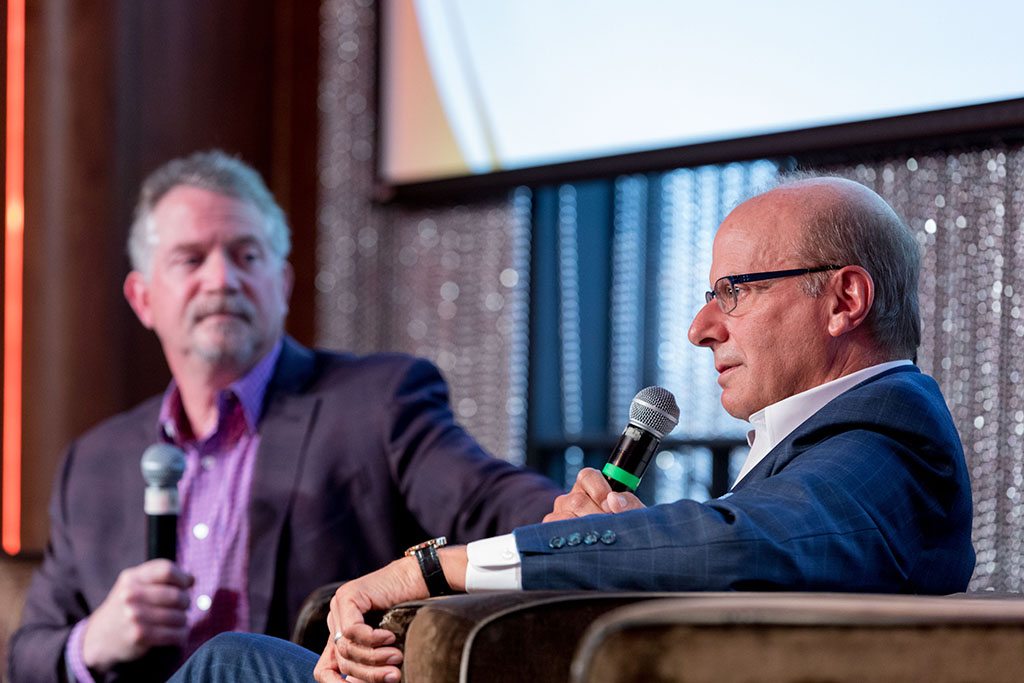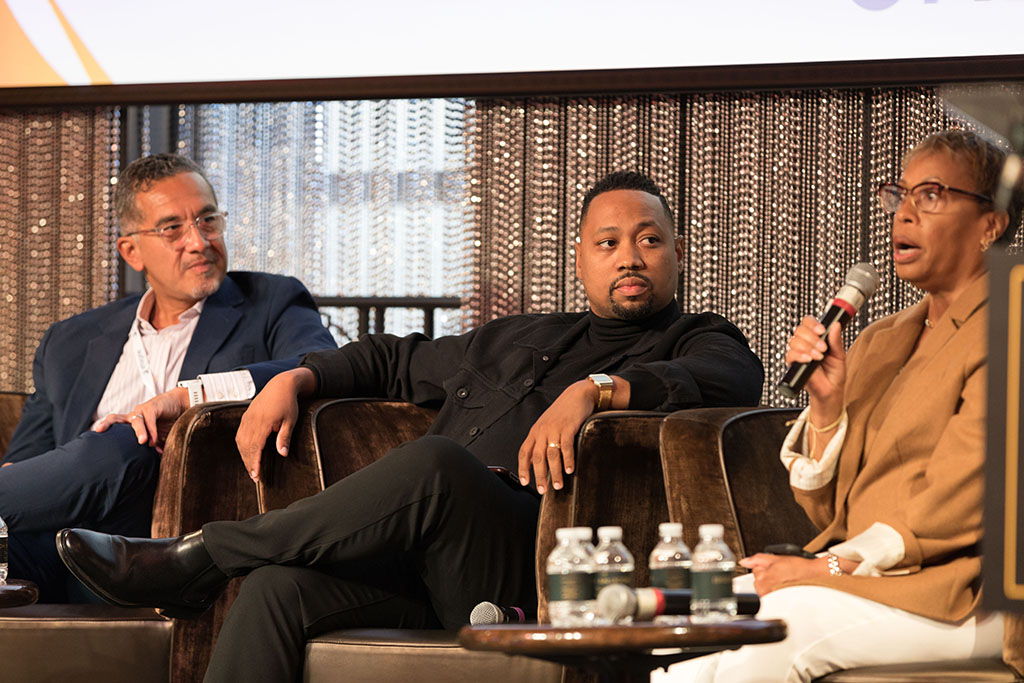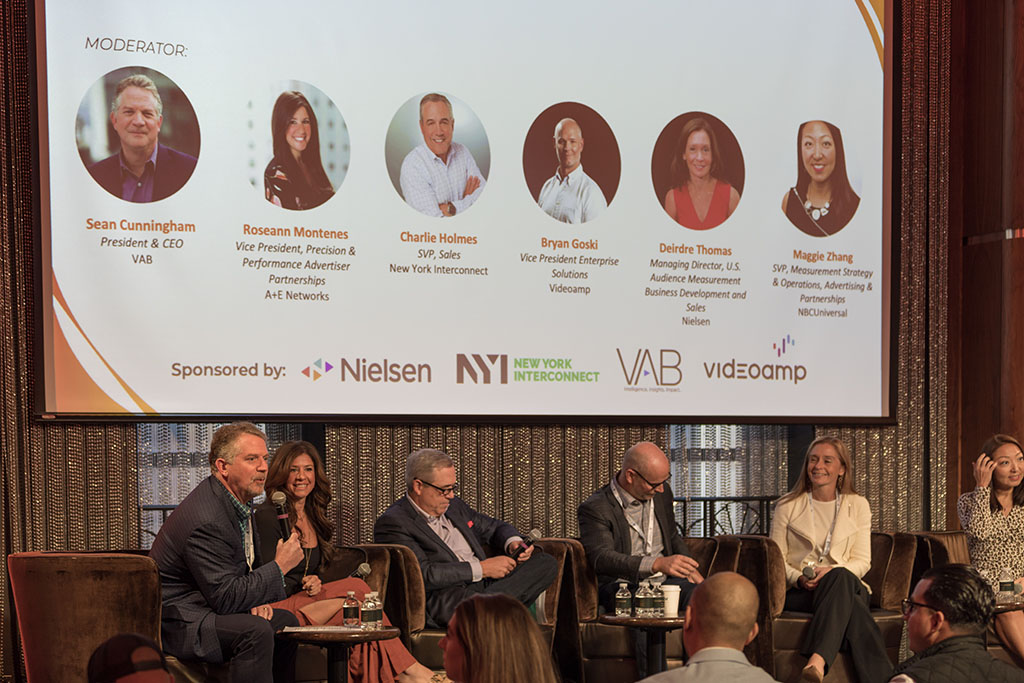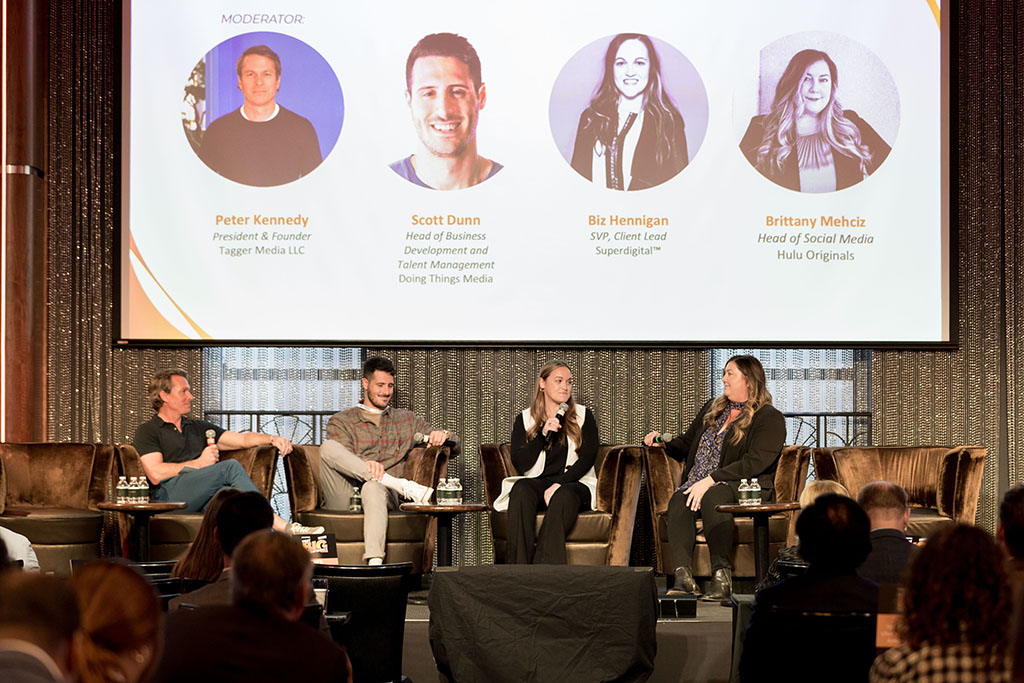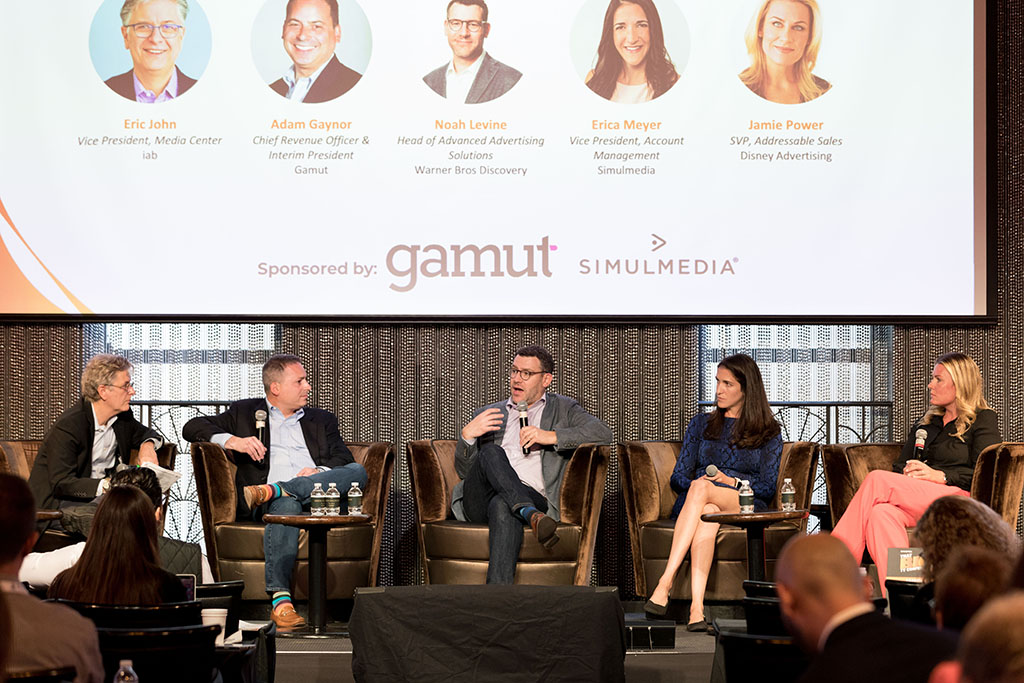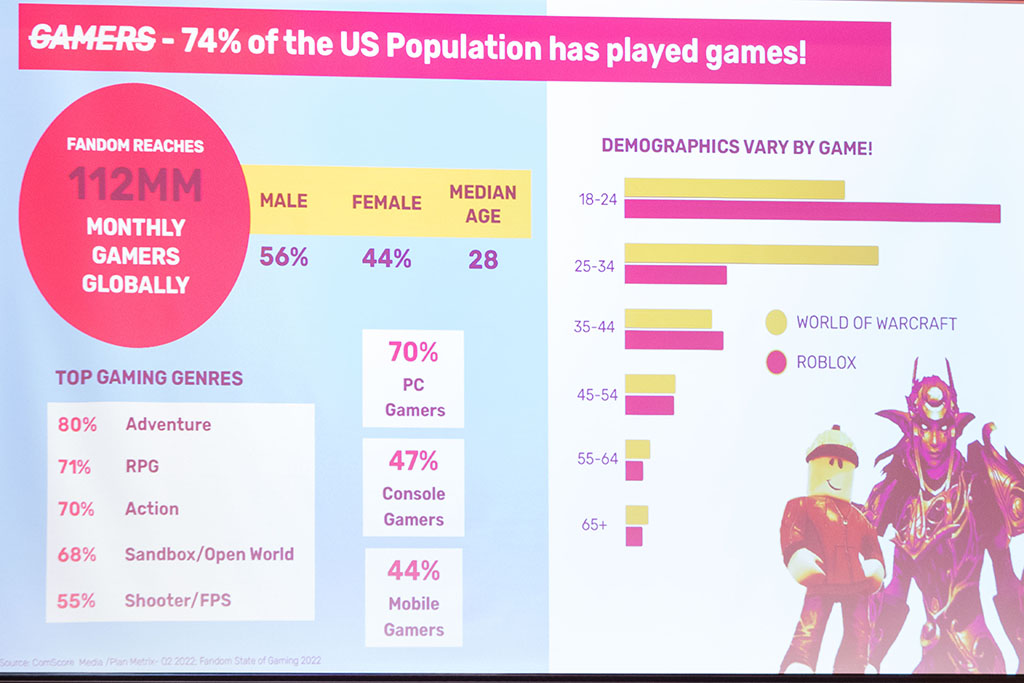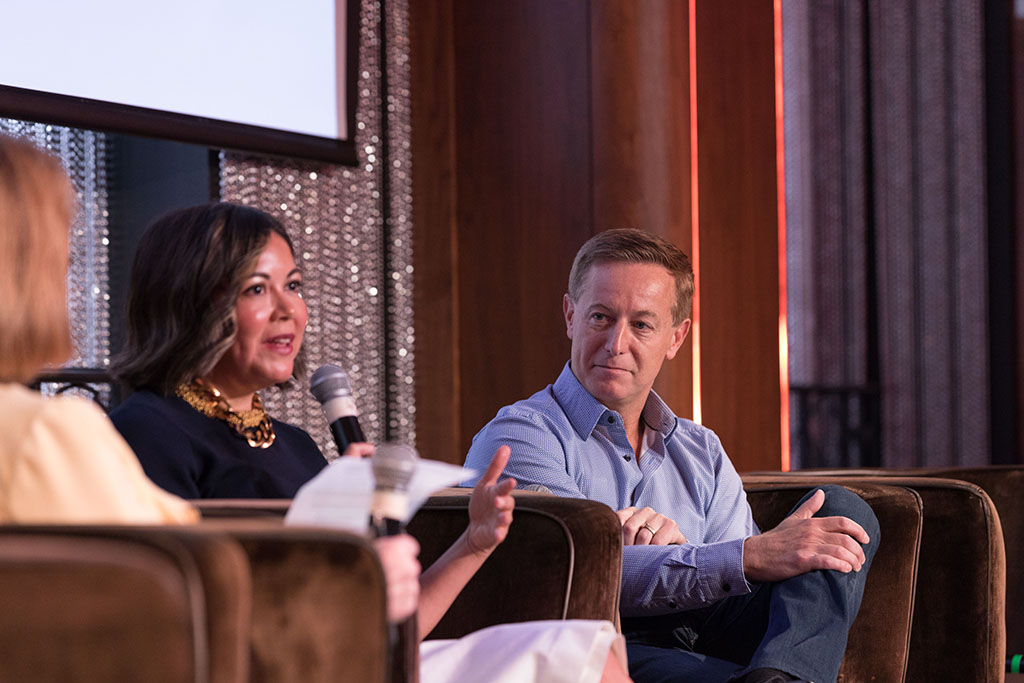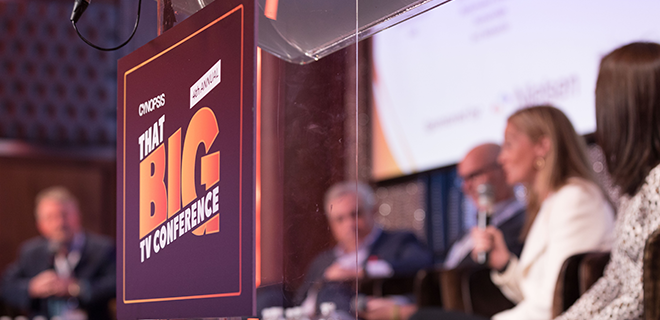
Industry link-ups are key to survival in a time of fluctuation and persistent change. The Cynopsis 4th annual That Big TV Conference was where television industry thought leaders shared innovative solutions, ways to dodge the bullets facing the industry today, and how to stay relevant in an ever-changing ecosystem.
There was much to learn from many credible and seasoned ad tech professionals, advertisers, and publishers. Here are some highlights that stood out.
1. Linear, Still the Leader
Keynote Jon Steinlauf, Chief U.S. Advertising Sales Officer at Warner Bros Discovery, emphasized the influence of Linear TV and highlighted that it is still in the lead. For Warner Bros Discovery, ad sales bring in about $10 billion in gross sales, of which around 80/20 linear to non-linear. When it comes to non-linear, less than half of it is streaming, including Bleecher Report, March Madness LIVE, and CNN.com, to name a few.
Regardless of the noise we hear from other publishers talking about dismantling their linear business due to “cord cutting,” Warner Bros Discovery is still looking at linear first.
“We think linear is really the primary focus of at least my part of the company, and a lot of the content people feel the same way,” Steinlauf said. “It’s $8 billion on the ad sales side, and it’s about as much or a little bit more on the distribution side because of the sports rights, the sports fees, the CNN fees. We think of that 80 million home sector of the country that has the bundle, we think of them as our best customers, and we’ll never take our eye off that ball.”
- Publishers can learn a lot about reach from WBD
During his keynote, Steinlauf focused on sports and how it makes up a large portion of their business. The network has a 40-year relationship with the NBA, thanks to Ted Turner, who initiated the NBA’s relationship with cable. They have a 22-year arrangement with the NCAA that they are currently in the middle of, and that tournament lives on CBS, TBS, TNT, and True TV. They are the only publisher with this type of reach in the sports department.
2. Invest in Minority-Owned Media
In 2022, multicultural ad spend is still not where it needs to be, and it seems there is a long way to go before some advertisers see its value. For example, Byron Allen’s Allen Media Group is suing McDonald’s for racial stereotyping in advertising spending, and he’s promised to sue more companies to level the playing field if necessary.
Executives like Royal Jackson, CCO of Impact Network, Rori Peters, SVP of Content Distribution & Marketing at TV One, and Fernando Romero Head of Ad Sales at Fuse Media, are true game changers at their outlets. They explained how investing in these audiences is crucial to advertisers’ bottom lines.
Here are two big reasons to invest in minority-owned outlets from their perspectives:
- TV One and Impact Network have very loyal audiences. So brands looking for consumers to purchase their products should invest in minority-owned media and media companies with a majority multicultural audience. Multicultural audiences over-index on digital media consumption, yet digital ad spend targeting these audiences is still very low. These media outlets deliver content that resonates. Peters, SVP of Content Distribution & Marketing at TV One, revealed that her company reaches 82% of the black population daily through TV Networks, radio stations, syndicated radio, and digital sites.
- When we talk about Diversity, Equity, and Inclusion, we’re talking about eliminating historical structural and cultural barriers to multicultural groups obtaining access to the same resources as the mainstream. “When talking about housing, voting, media ownership, etc., it goes across the board,” said Royal Jackson, Chief Creative Officer at Impact Network. “The American Dream is broad, and if we focus on equity and everyone having a share in that area, and to be able to compete at the same level as the majors, it’s very important to have that equity showcased through the investments.”
Some advertisers are already seeing outstanding engagement with multicultural audiences and investing in minority-owned media companies because the audiences are so loyal and are much more likely to take action on relevant advertising.
Investing in minority-owned media shouldn’t be viewed as a one-off buy but as a mutually beneficial partnership. The multicultural audience has a total of $5 trillion in buying power, with $1.6 of that represented by the African-American audience alone. That’s 9% of the nation’s total buying power, so that’s nothing to sneeze at. Minority-owned media outlets are looking for a sustained commitment, and rightfully so.
3. Measurement Vs Currency
Measurement and currency are not interchangeable, but the magic is found in speaking about both in the same language, or “love language,” as Roseann Montenes, VP of Precision & Performance Advertiser Partnerships at A&E, would call it. Here are three findings about cross-platform TV measurement from publishers actively growing their ad tech businesses in those areas.
- Make your first-party data interoperable
A common challenge that many publishers are seeing is the massive fragmentation of CTV. Maggie Zhang, SVP of Measurement & Operations, Advertising & Partnerships at NBCUniversal, explained how there are over 300 digital endpoints at NBC, making it impossible to rely on a single panel to measure CTV. Fortunately, publisher networks are increasing their first-party data and identity resolution.. NBC understands that first-party data is crucial to gaining a deeper understanding of their audience’s consumption habits. At the same time, Zhang clarified that the company’s goal is not to create a walled garden but to make their first-party data interoperable. NBCUniversal has found this truly game-changing for CTV measurement. They can measure across platforms, ads, and programming available the next day, which helps them set the bar high for speed and accuracy. - Learn the “Love Language”
Often, publishers try to figure out each vendor, the mythology, and the data, versus what matters most to their clients. Montenes explained how A&E Networks was the first to do a guaranteed against business outcomes—they put tracking in store locations, website visitation, and, more recently, viewability. All of this is specific to a particular advertiser, their KPIs, and what will drive their day-to-day.” In terms of alternative currency, publishers need to make sure they are speaking the same language and the same truth no matter which clients you are talking to,” Montenes said. “It’s challenging for a publisher to find the same love language as their clients, but being upfront, clear, and transparent is really what is driving the conversation.” - Nielsen’s way of empowering a better media future
With diversity at the forefront, Nielsen is putting a ton of energy into empowering a better media future for everyone as they recognize the significance of hitting and measuring different ethnic backgrounds. They plan to see new heights in cross-platform currency through Nielsen ONE, which launches this December. Nielsen ONE will provide cross-streaming across linear TV, CTV, computer, and mobile. This is one metric deduplicated so you can transact seamlessly across all platforms. In measurement, expect to see Nielsen introducing the same granularity that comes with digital, thus creating a vital commonality. Nielsen sees Nielsen ONE as the identity system to bring currency and measurement together.
4. Identity’s Role in Addressable TV
These days identity plays a significant role in today’s dynamic TV advertising landscape thanks to the growing use of first-party data. Seema Patel, SVP of Data Partnerships at TelevisaUnivision, provided great insight into what her company is doing in that regard. She examines how identity is very effective when used correctly and in a privacy-first way.
- Gather various types of inventory and ensure accuracy of that data
It’s more important now than ever to bring together various types of inventory across different endpoints for TelevisiaUnivision, that includes cable, broadcast, CTV, streaming, and audio. Patel ensures that her team finds solutions to bring all of those inventories together to facilitate cross-platform campaigns in a unified way. However, the heartbeat of everything lies in the accuracy of that data. Accuracy is the only way to be 100% sure that you have successful outcomes for your ad campaigns. Today, media measurement routinely undercounts the Hispanic value, which causes a sharp misrepresentation of a valuable consumer group with over $2.7 trillion in spending power. TelevisiaUnivision continues to spend a lot of time and investment in its data and working with its partners to ensure that they accurately represent this group in an ecosystem where many third-party providers do not have the coverage for that accuracy. - Take advantage of your partnerships
In this marketplace, Patel reassures ad tech professionals to locate as many partnerships as possible and to be flexible. “There is no one-size-fits-all here,” she says, “so please continue having conversations in terms of partnerships, and at the end of the day, remember that the partnership can depend on the use case regarding your data, in terms of what data you choose to share, how you share it, and whom you share it with.” - Publishers should utilize brand’s first-party data too
Brands sometimes have their own data and usually end up activating against that data. Sometimes their general market segments don’t necessarily always translate with publishers. For this reason, TelevisiaUnivision works in a consultative way with brands to augment/hydrate brands segments with their data. For instance, they recently worked with an auto partner, where they helped to expand the deciles of the segment to broaden it. Publishers should work consultatively to help clients bring their data, leverage their data, and leverage their own first-party data to reach the best consumers for their objectives.
5. Don’t Sleep on TikTok
TikTok hit the ground running, even before the pandemic turned everyone into avid watchers of short-form video. Publishers need to wake up, smell the coffee, and stop sleeping on TikTok’s capabilities for growing traffic and audience consumption. For example, Brittany Mehciz, Head of Social Media at Hulu Originals, pointed out a time when the social media platform boosted its subscribers out of nowhere. It started with the Hulu original “Run,” starring Sarah Paulson from “American Horror Story.” The film premiered in November 2020, but a viral TikTok from March of this year made the film pop.
“That film popped on TikTok, and it was like a pivot,” said Mehciz. “A year and a half later, we traced it back to a TikTok where someone was just taking a video recording of their laptop watching “Run” and just had quick commentary. That drove subscribers for the week like crazy a year and a half later. So I think that’s a great example.”
Recent findings at Tagger Media LLC show that user-generated content gets about 1000% better engagement, reach, and impressions than branded content. On TikTok, that number increases to 3300% better than branded content.
6. Tackling Targeted TV
The Power of addressability in media is undeniable. Noah Levine, Head of Advanced Advertising at Warner Bros. Discovery, called addressable “synonymous with audience targeting.” Jamie Power, SVP of Addressable Sales at Disney Advertising, emphasized how important it is for publishers to share as much data as possible.
“I think the agency buy-side tools are built on the legacy thinking in a world that streaming is now a part of linear,” Power stated. “Newer metrics are essential because they show advertisers how you are reaching and how efficiently you are reaching them, and what’s this myth of linear versus streaming, and how do you mix the plan.”
It’s all about how we enable audiences with the most scale, and clean rooms have been a way that Disney has allowed that. We see this through their recent partnership with the Trade Desk, in which they have a clean room that is accessible, so if the Trade Desk needs to reach audience X, Disney does not need to know who that is. Yet, they can activate that audience format.
7. Gaming Publishers Have the Power of Linear
The gaming industry has been on the up and up for some time now, and gaming publishers are beginning to see the value in what they have to offer advertisers.
- Gamers extend beyond Gen Z
My 72-year-old aunt is a die-hard Candy Crush player. Some days, she just sits on the couch, and that is all she does. Does she consider herself a gamer? No. Is she a gamer? Yes! Gaming publishers need not underestimate their audiences and the data they can gather from their consumers. Sean Kiely, Head of Gaming & Esports at Fandom, pointed out that they do not refer to their audience as gamers but as entertainment fans. Now don’t get it twisted. Kiely did highlight how Gen Z brings them a ton of money. Still, gaming publishers shouldn’t shortchange themselves by honing in on their Gen Z audiences because you can also monetize Boomer gamers. - Gaming is like TV
Fandom can see how gaming fans visit movie and TV communities across their platform. Seventy-three percent of TV viewers on Fandom have also played a game in the past month. Those who play Halo are 18 times more likely to watch “The Expanse” on Amazon Prime. t It is truly all about understanding the gaming audience, their tendencies, and other entertainment avenues they love.
8. Driving Revenue in the Cross-Screen Era
Currency isn’t just about counting, and when it comes to measurement, there is undoubtedly more than one way to skin a cat. We know that both are very important to the role of future TV. Andrea Zapata, EVP, Head of Ad Sales, Research, Measurement & Insights, at Warner Bros Discovery, and Sean Muller, CEO & Founder of iSpot.tv focused on why and how publishers can make the most of both.
- Demonstrate your value to drive revenue
Value can come in several different ways; it can come in your sheer metrics, like how many people you reached. How many times did you reach them? But at the same time, it can also come in the world where it’s inherently linked to efficacy. Publishers need multiple partners to adequately measure all KPIs and the value brought to the table for your advertisers. It would help if you had partnerships that allow you to be nimble and make recommendations on doing campaign reach frequency smarter and better across portfolios. Getting richer insights has never been more effortless, which is the value publishers need to hone in on. - Education is a challenge when it comes to operationalizing a new currency
We have been trained in one currency since the beginning of time, and we’re used to seeing things on a panel. Broad strokes, right? Using content as a proxy to reach audiences fundamentally changes the game.
Key Measurement Takeaways of WBD’s ad tech business :
- Standardization
- Identity resolution
- Transaction capabilities
- Personalization
